


Some of the achievements and implemented products of Innovation Photonics Evolution Research Center and related organizations are displayed in the exhibition room.


※Click the number to show the detail.
The image sensor ”BT3300N” for high-resolution 8K super-high vision camera, which has 16 times as many pixels as the current high-definition TV broadcasting standard, was manufactured by Brookman Technology Inc.
BT3300N was developed as a reference of the only (as of January 2016) image sensor achieving the full-specification standard of the Super Hi-Vision (8K, 120 frames/second). Cameras using this has been already developed in the related companies and applied to the broadcast test in NHK.

- 8K Super High Vision Display
8K Display Imitated with Four 4K Liquid Crystal Display (LCD)

- 8K Camera Head
Toccare, the new Near Infrared Spectroscopy (NIRS) was developed jointly by Hamamatsu Medical College, Shizuoka University, and ASTEM Inc.
Masashi Niwayama, associate professor of Shizuoka University, who has performed analysis and measurement of various light propagation, successfully reduced the measurement error, which has been long-time problem, to about 1/10 with the special decomposition method by multiple-point optical measurement and principle of NIRS.
This is a technology to measure the distribution of blood O2 content in depth direction precisely with special decomposition method.
Professor Naohiro Kanayama, Hamamatsu Medical College, has proposed the concept of integrated this NIRS sensor with fingers of the doctor. Owing to this, it has become possible to diagnose the health information of fetus and newborn babies.

With difference frequency method, which utilizes GaP crystalline, single-color coherent terahertz light source is developed. Its application to terahertz laser spectrophotometry devices is being progressed.
This compact high-power terahertz light source, which was made compact and energy-saving so that it could be incorporated in the inspection process of factories, etc. as a way of application in industries, was developed as a device for everyone to handle easily.
Dr. Sakamoto of National Institute of Health Sciences investigated the influence of binder to the transition of pseudo-crystalline form and currently is engaged in evaluating the relation between the viscosity of binder, which is important additive in preparing granule for tableting, and pseudo-transition of crystalline form in cooperation with Professor Sasaki. It has potential to lead to the detection of quality error based on the physical properties such as dissolution behavior, etc. It might unlock the potential of terahertz wave technology and enable to investigate the distribution of pseudo-crystalline form and transmission processes.
Hereafter, it was shown that this technology can be utilized in not only the evaluation of the quality properties in the R & D phase of tablets, but also be applied to quality assurance in the process as well as troubleshooting in case of unpredicted risk.

Time of Flight method is one of distance image measurement methods which use an image sensor. It is the method to measure the distance L to the object by projecting light on the object and measuring the time for the reflection to return.
- Speed of the Light: 30 thousand kilometer per second (299,792,458m / sec)
- Time for the light to proceed 1m: 3.3 nanosecond (=3.3×10-9 s)
- Time for the light to proceed 1mm: 3.3 picosecond (=3.3×10-12 s)
Kawahito/Kagawa/Yasutomi Laboratory of Shizuoka University
Kawahito, Kagawa, Yasutomi Laboratory, which is developing TOF Distance Image Sensors, has realized charge transport by CMOS process with almost as fast as by CCD and realized the measurement of the distance to the object. The CMOS-TOF camera with this image sensor installed can check light-dark image and distance image.
https://idl.rie.shizuoka.ac.jp/study/project/tof/index.html

Image sensors are, simply speaking, guts of digital cameras. Image sensors are one of the industrial fields Japan is most strong in, with more than 95% of CCD and more than 50% of CMOS developed in Japan. Existing high sensitivity cameras had a problem in size and weight, because they need cooling (-50℃) and driven with high voltage (30V).
In Kawahito-Kagawa-Yasutomi Laboratory of Shizuoka University, it was enabled to shoot both dark and light places at the same time, with the dynamic range as much as 150dB, higher than that of human eyes.
As a consequence, they were successfully downsized in the joint development with a company.
https://idl.rie.shizuoka.ac.jp/study/project/multi_low_noise/index.html
The exhibited item is a detector which was released in 2012, assuming the use as a measurement module for simple inspection of soil contamination or stationary measurement.
The product name is “Monita-kun (Mr. Monitor).”
It is a cadmium telluride (CdTe) semiconductor detector.
It gives spectrum display, connecting with PC via USB.
Since existing color cameras has the color gamut limited within the triangular area of the sRGB, they adapt the color so that the actual color data may be expressed more beautifully.
PaPaLab’s cameras can record colors which could not be photographed before, with the camera filter given sensitivity of human eyes. They can shoot “just what you see.”
Additionally, this camera, which measures all color visible for human, colorimetrically, can be used as a measuring device to analyze colors with high precision.
http://www.papalab.co.jp/index_en.html

Hamamatsu Photonics calls R & D activities along the value complying “sustainability” “Life Photonics.” It is engaged in the study of various optical technologies with the theme related to “Life,” which includes various meanings such as life, living creatures, human life, source of vitality, and ways of life.
Positron (positive electron) which was emitted from the positron-emitting nuclide which was incorporated in an organism, after losing kinetic energy in the neighborhood, combine with electron composing material and extinguishes. At that time, a pair of gamma rays (with energy of 511 keV) emitted to direction opposite to each other. The position where the positron was emitted is detected by simultaneously detecting the pair of gamma rays with a pair of detectors.
https://www.hamamatsu.com/jp/ja/technology/innovation/pet/index.html

- The gamma ray which entered the scintillator is transformed into a weak light and subsequently transformed into an electric signal with a photo multiplier.

- The discharge position of the gamma ray is detected by simultaneously measuring them with a pair of PET detectors.
| No. | Year | 名称 | International Conf. | Chip |
|---|---|---|---|---|
| 1 | 1995 | A high-sensitivity microfluxgate magnetic sensor (Ver.2) |  |
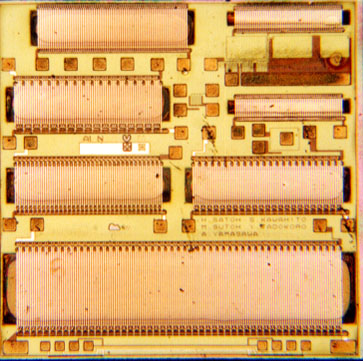 |
| 2 | 1996 | An integrated microfluxgate magnetic sensor |  |
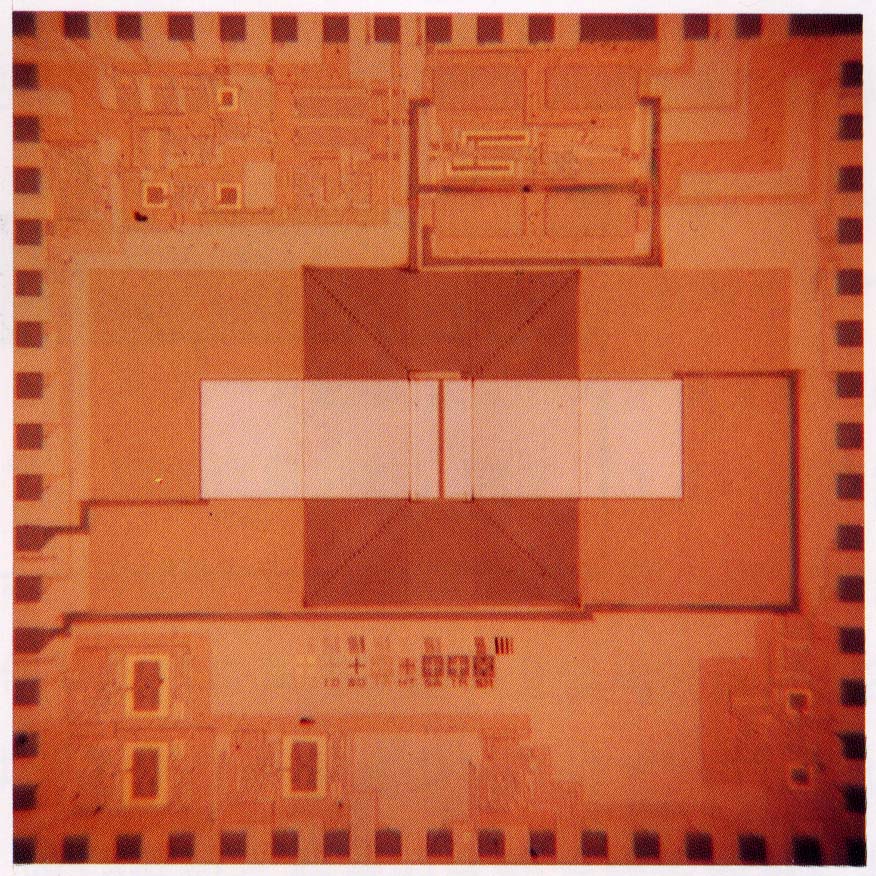 |
| 3 | 1997 | A CMOS image sensor integrating low-power image compression circuits |  |
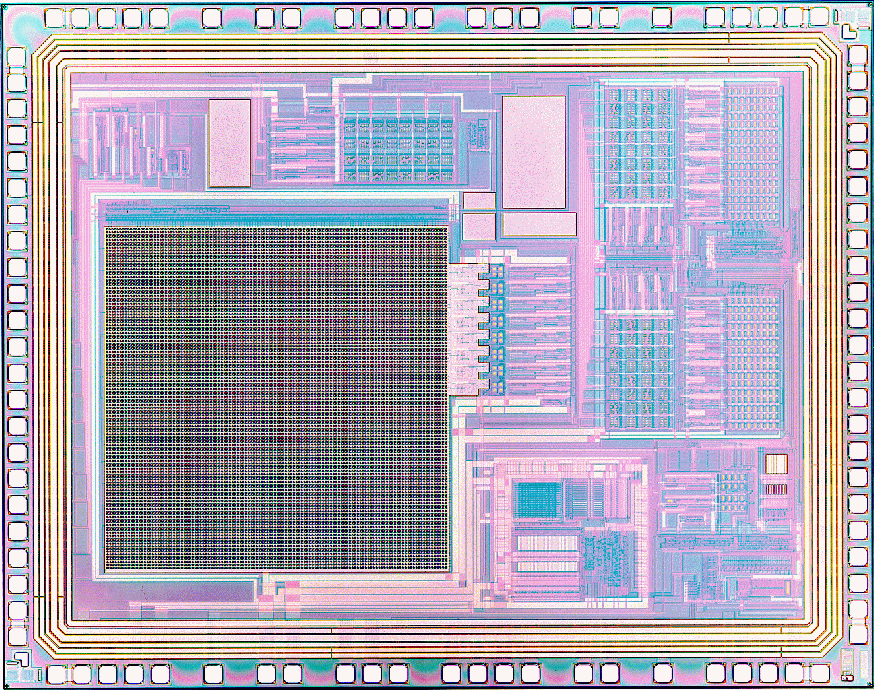 |
| 4 | 1999 | A high-sensitivity integrated digital fluxgate sensor |  |
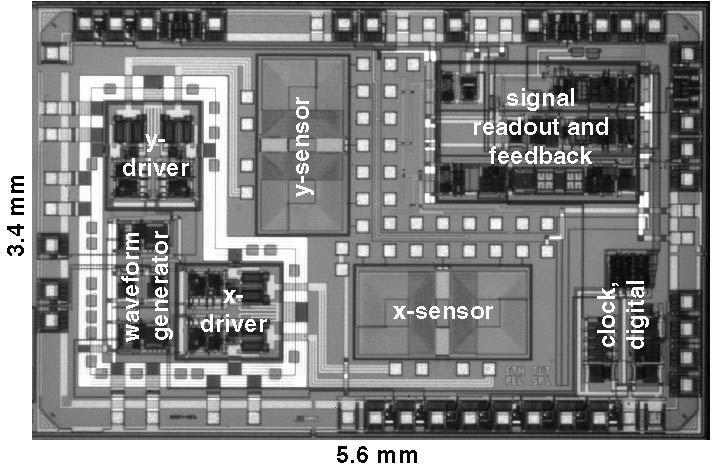 |
| 5 | 2000 | A high-speed image sensor for low-power motion-vector estimation |  |
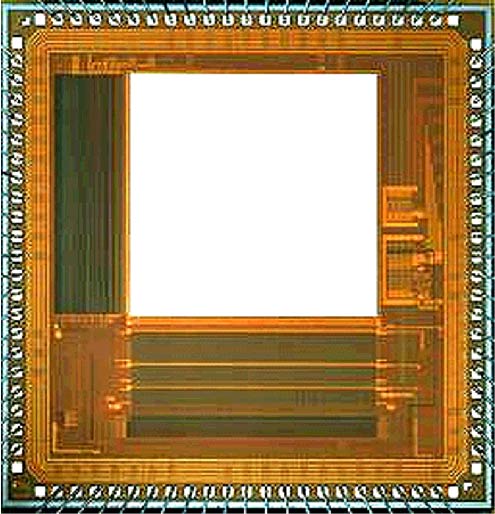 |
| 6 | 2002 | A high-speed (30MS/s) low-power(16mW) 10b ADC |  |
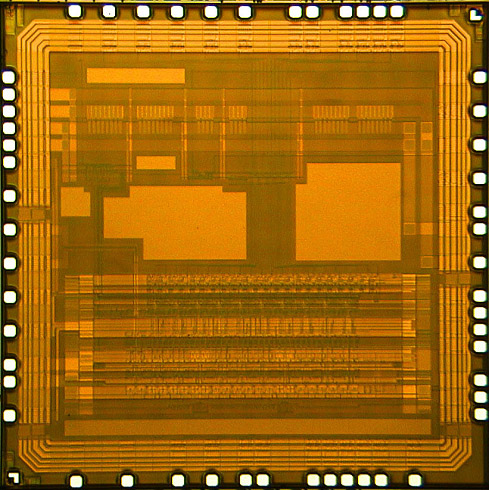 |
| 7 | 2003 | A high-sensitivity CMOS image sensor using an adaptive-gain column amplifiers |  |
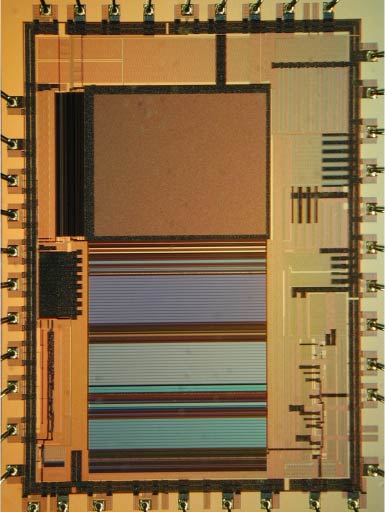 |
| 8 | 2003 | A high-speed low-power parallel pipeline A/D converter |  |
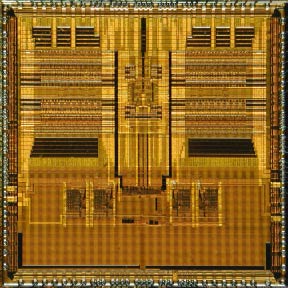 |
| 9 | 2003 | A CMOS rotary encoder using magnetic sensor arrays |  |
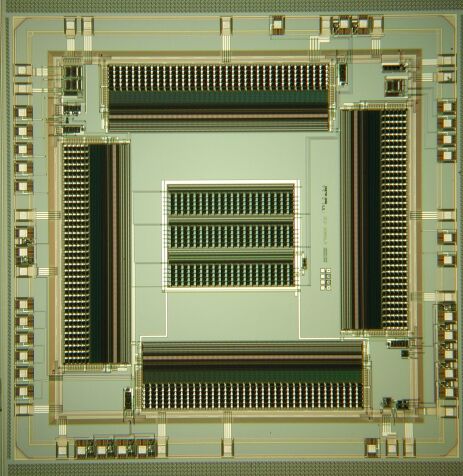 |
| 10 | 2004 | A CMOS Magnetic Sensor Arrays Using Native-Substrate MAGFETs for a Smart Rotary Encoder |  |
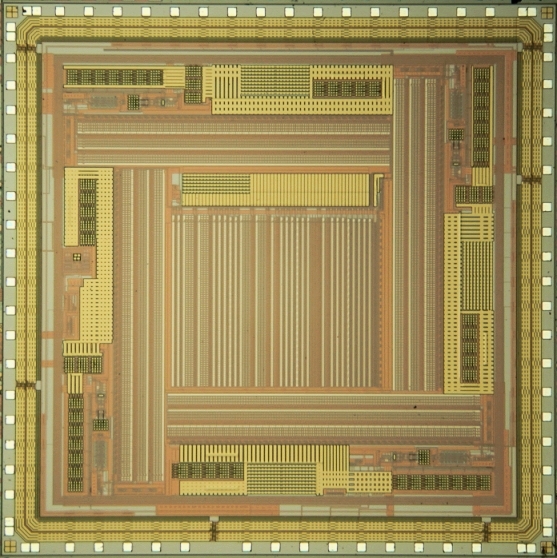 |
| 11 | 2004 | A wide DR CMOS image sensorusing multiple resolution column parallel ADC |  |
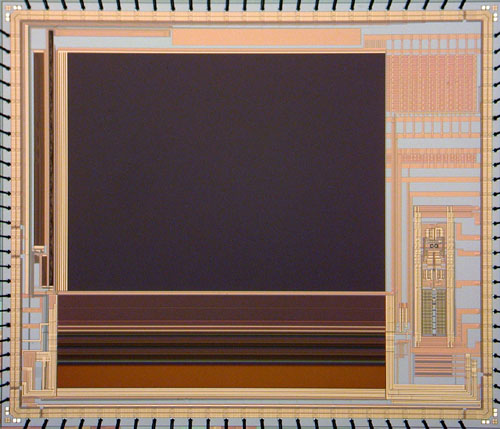 |
| 12 | 2005 | A Cyclic A/D Converter with Pixel Noise and Column-wise Offset Canceling for CMOS Image Sensors |  |
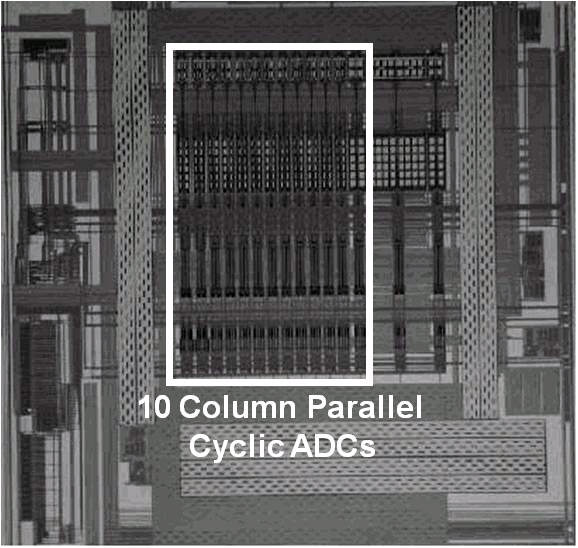 |
| 13 | 2005 | A CMOS TOF Range Image Sensor with Gates on Thick Oxide Structure |  |
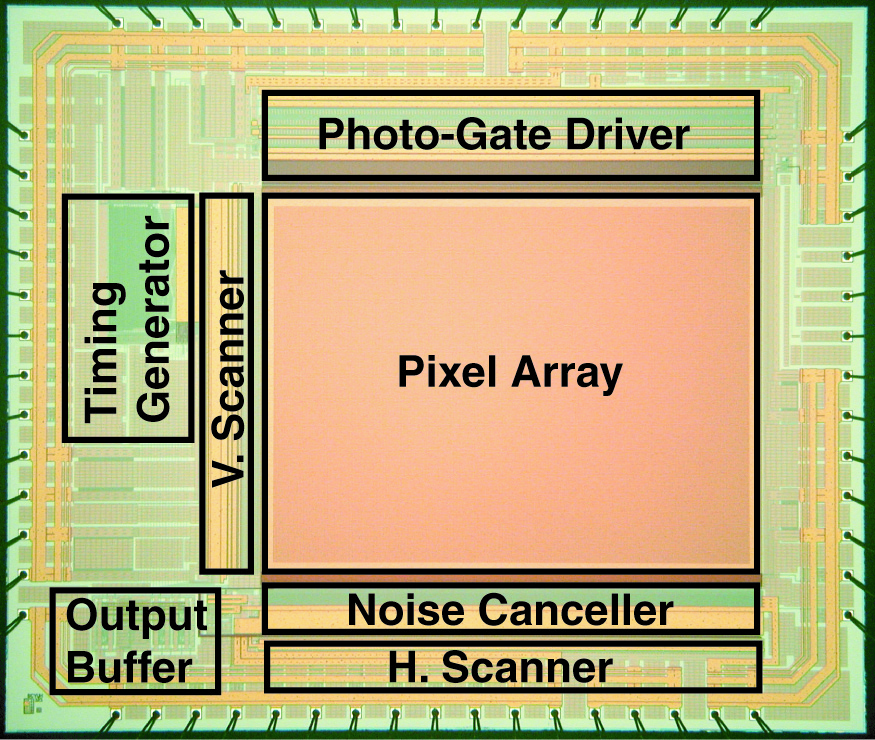 |
| 14 | 2005 | A 120dB DR CMOS image sensor with a multiple exposure burst readout method and a 12b column parallel cyclic ADC |  |
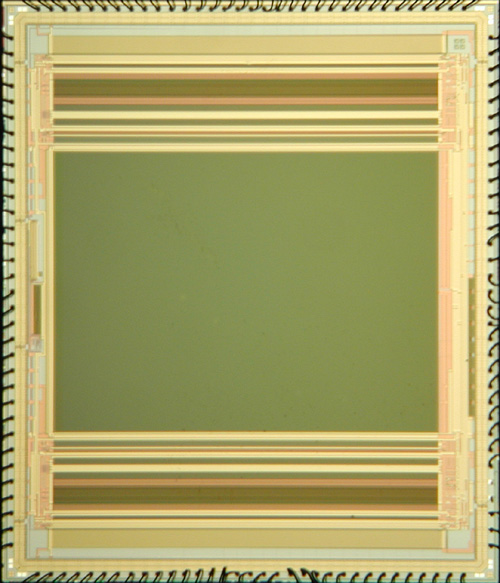 |
| 15 | 2005 | A 10b-per-rotation smart magnetic rotary encoder integrating an angle calculator |  |
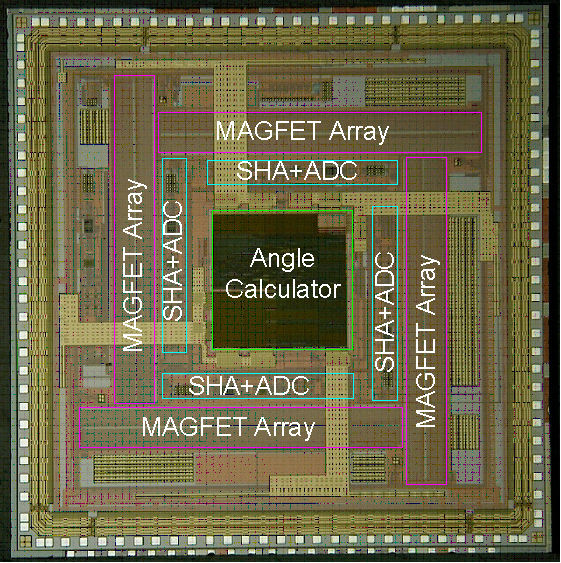 |
| 16 | 2005 | A 160dB Wide Dynamic Range CMOS Image Sensor with Reduced-Offset 12-bit Column Parallel Cyclic ADCs |  |
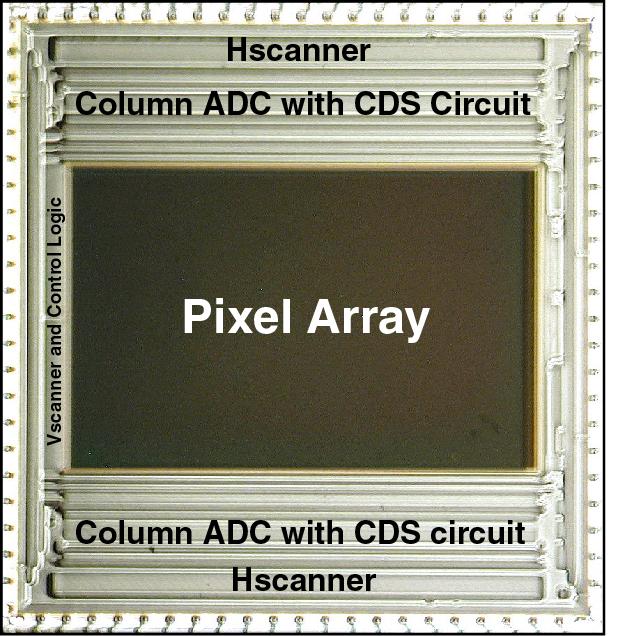 |
| 17 | 2006 | A 1.0V 30mW 10b 100MSample/s Pipeline A/D Converter Using Capacitance Coupling Techniques |  |
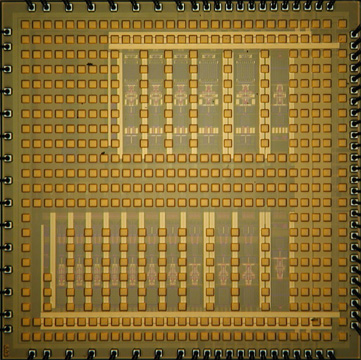 |
| 18 | 2006 | A 3500fps High-speed CMOS Image Sensor with 12b Column-Parallel Cyclic A/D Converters |  |
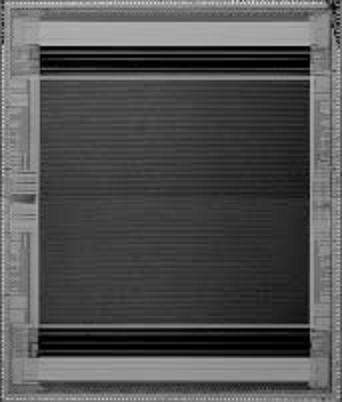 |
| 19 | 2006 | CMOS Time-of-Flight High Pixel 3D Distance Image Sensor |  |
|
| 20 | 2007 | A 14b Low-power Pipeline A/D Converter Using a Pre-charging Technique |  |
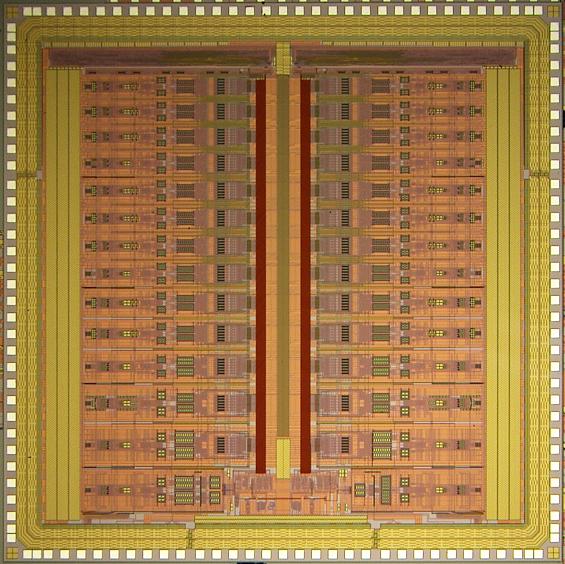 |
| 21 | 2007 | A High-Speed CMOS Image Sensor Integrating SIMD-type Column Parallel Image Compression Circuits |  |
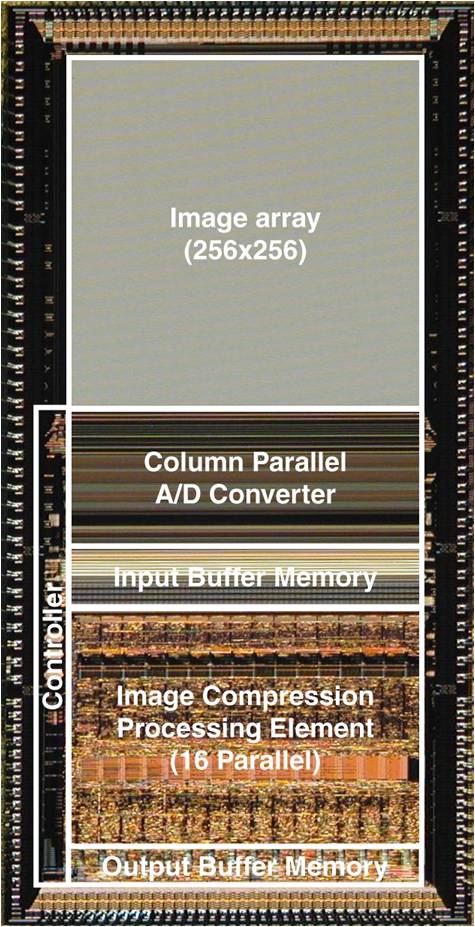 |
| 22 | 2008 | A 15b 30MSample/s 123mW Pipeline A/D Converter with Linearized Settling Error Correction of Non-Slewing Closed-Loop Amplifiers |  |
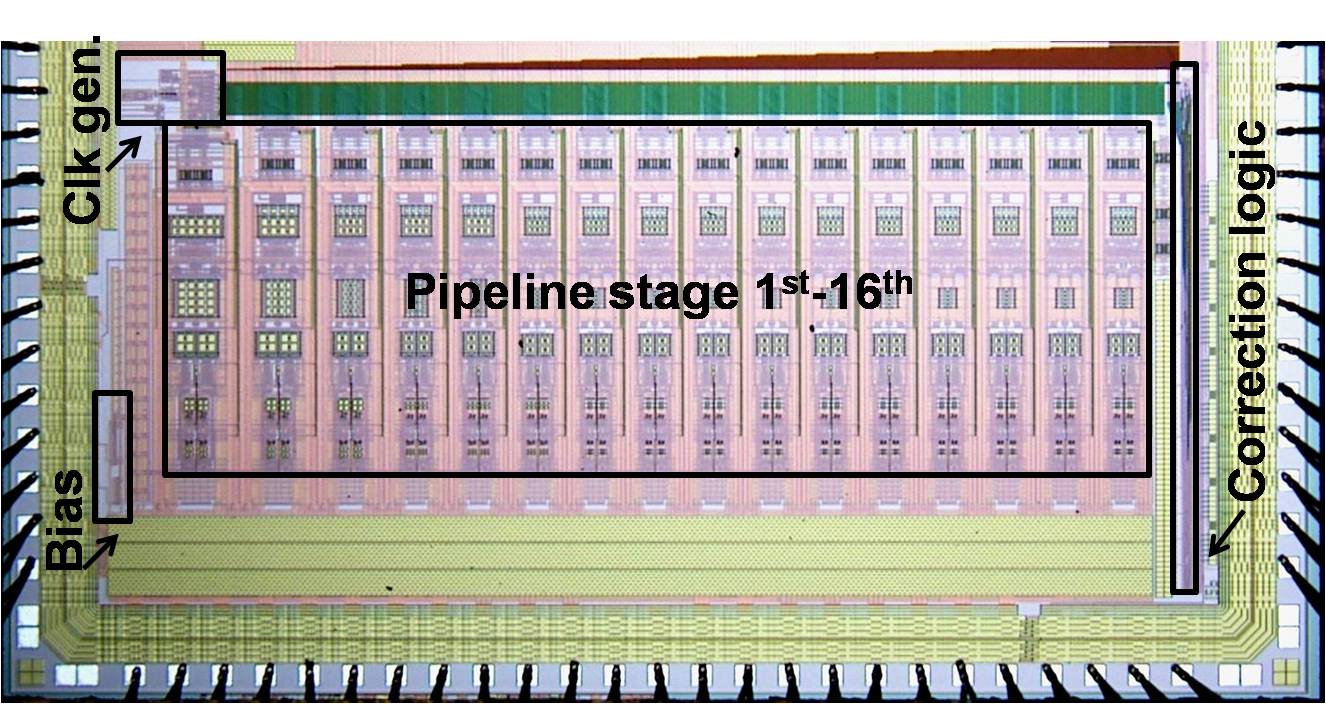 |
| 23 | 2008 | The First 14bit Column-Parallel Cyclic A/D Converter and a CMOS Image Sensor Using Thereof. |  |
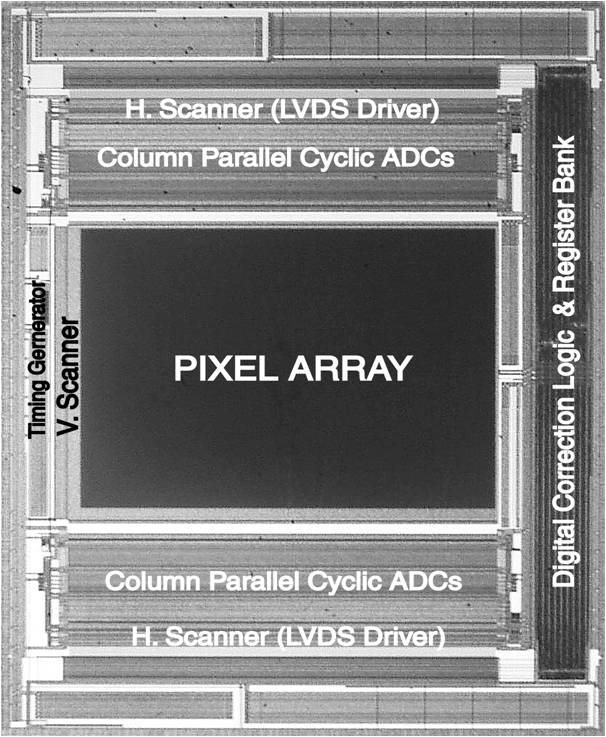 |
| 24 | 2009 | A CMOS imager and 2-D light pulse receiver array for spatial optical communication |  |
 |
| 25 | 2010 | A 2.7e- Temporal Noise 99.7% Shutter Efficiency 92dB Dynamic Range CMOS Image Sensor with Dual Global Shutter Pixels |  |
 |
| 26 | 2010 | A CMOS Image Sensor for 10Mb/s 70m-Range LED-Based Spatial Optical Communication |  |
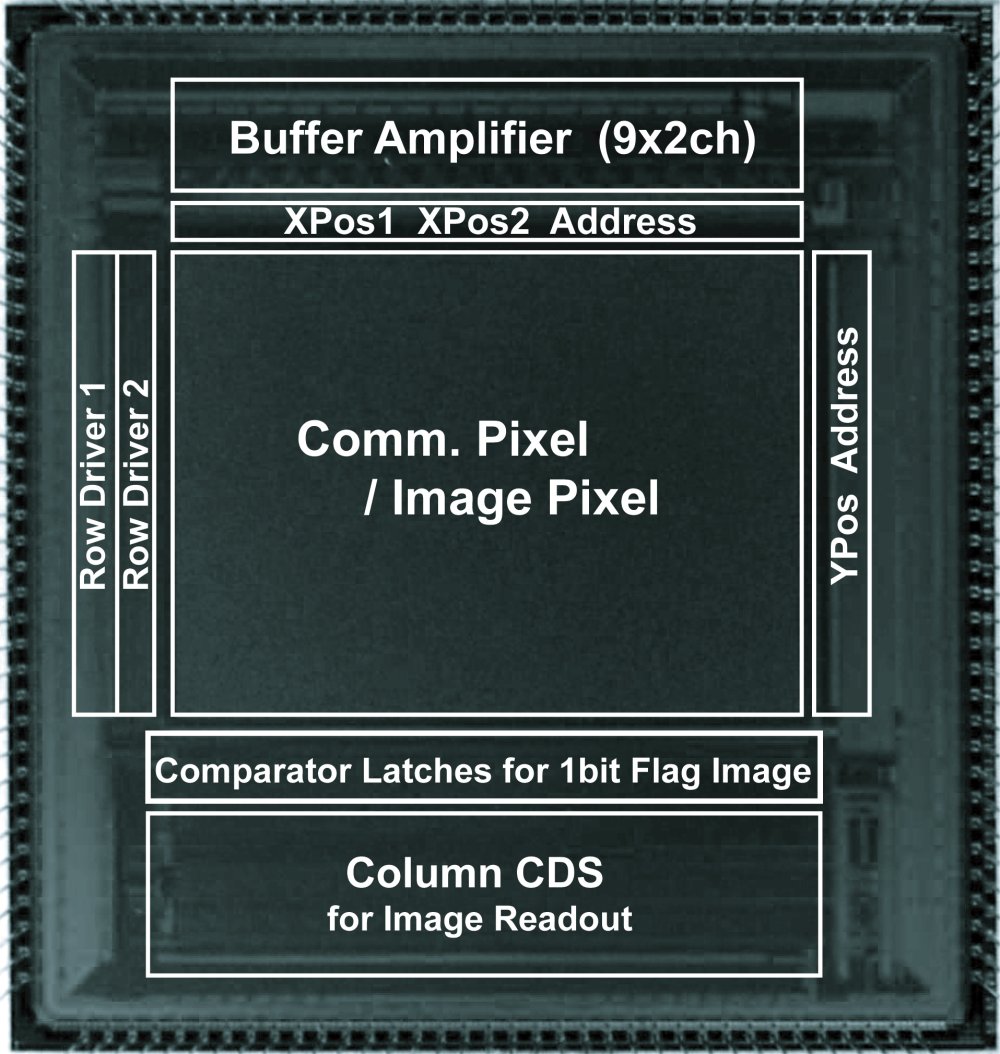 |
| 27 | 2011 | A Low-noise High-dynamic-range CMOS Imager with a 13-to-19b Variable-Resolution Column-Parallel Folding-Integration/Cyclic ADC |  |
 |
| 28 | 2012 | A 33Mpixel 120fps CMOS Image Sensor Using 12b Column-Parallel Pipelined Cyclic ADCs |  |
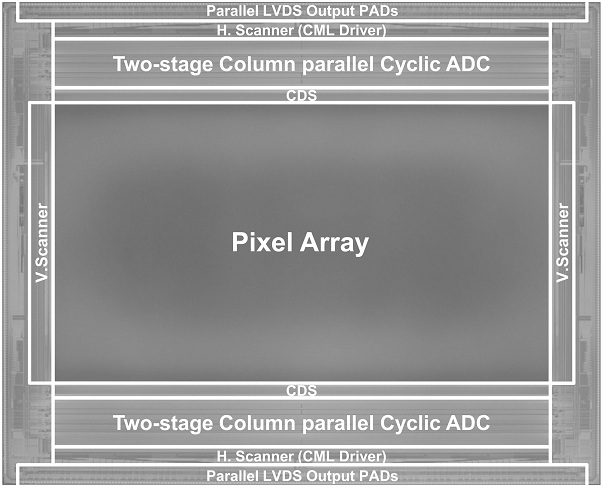 |
| 29 | 2012 | CMOS Time-of-Flight High Pixel 3D Distance Image Sensor |  |
 |
| 30 | 2013 | Single-Shot 200Mfps 5x3-Aperture Compressive CMOS Imager |  |
 |
| 31 | 2013 | 10ps High Time Resolution CMOS Image Sensor Using 2 Tap Lock-in Pixel for Time Resolved Measurement |  |
 |
| 32 | 2013 | CMOS Time-of-Flight High Pixel 3D Distance Image Sensor |  |
 |
| 33 | 2014 | High Distance Resolution Time-of-Flight Image Sensor that has Achieved Distance Resolution of 0.3mm |  |
 |
https://idl.rie.shizuoka.ac.jp/study/chipgallery/index.html

Dr. Masashi Niwayama, associate professor at Shizuoka University, has made NIRS, which was very large device, compact and developed a new algorithm to measure hemodynamics in the bio-tissue non-invasively, by detecting light penetrating through the body with multiple photodetectors with different distance.
The NIRS system, which uses the new special resolution method, has improved the measurement precision by correcting the influence of tissues lying between, such as skin. Additionally, its accuracy has been confirmed by comparing it with the conventional positron CT by experiments.
This brain NIRS of sun visor type is the implementation of the technology invented by Dr. Niwayama, associate professor, by ASTEM, Inc.
This device, with an extremely thin NIRS plate device stuck on it, is an epoch-making device, which enables to. measure O2 saturation of the bloodstream in the forehead by just wearing the sun visor.
https://www.astem-jp.com/product/nirs/nirs131.html

Shizuoka University is participating in the “Sensitivity Innovation R & D Base for the Growth of Spiritual Value” of ”Center of Innovation Creation Program (COI STREAM)” of MEXT as an Innovative Photonics Evolution Research Satellite Center.
Professor Kawahito of Shizuoka University has developed the “Face Sensing Camera,” which can measure the stress situation, etc. of a person from the bloodstream on the face, in this project.
This is the achievement of the R & D of high sensitivity characteristic camera with wide dynamic range, which accurately measures the bloodstream of the human face fully utilizing image sensing technology, even in the actual environment, where the brightness widely changes from the daytime to the night.

Innovation Photonics Evolution Research Center has been accepting millions of domestic and overseas visitors since its launch in 2015. Among them it was viewing of 8K Hyper-High Vision Broadcasts that has drawn the biggest interest.
Takayanagi Memorial Future Technology Creation Fund has installed LCD TV for 8K, a tuner for 8K, and a hard disk drive for 8K in order to introduce world’s first CMOS image sensor for 8K Super Hi Vision cameras jointly developed by Brookman Technology Inc, a venture company originated in Kawahito Laboratory of Shizuoka University, and NHK Scientific and Technical Research Laboratory, thereby enabling to receive, view, and record the new 4K/8K satellite broadcast, which launched December 2018.

innovative Photonics Evolution Research Center (iPERC)
3-5-1 Johoku, Chuo-ku, Hamamatsu, Shizuoka 432-8011 Japan
phone: +81-53-478-3271 / fax: +81-53-478-3256



















